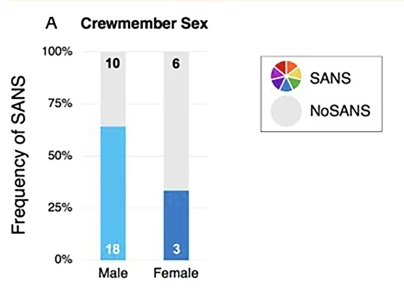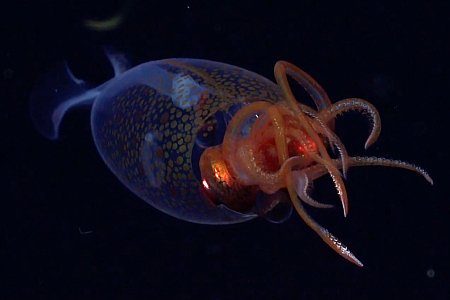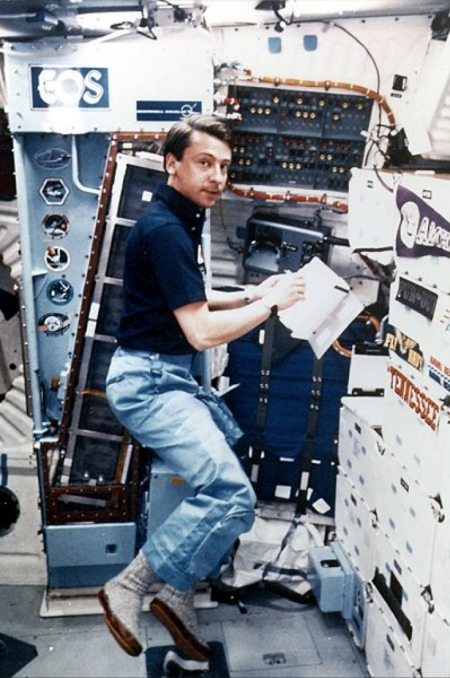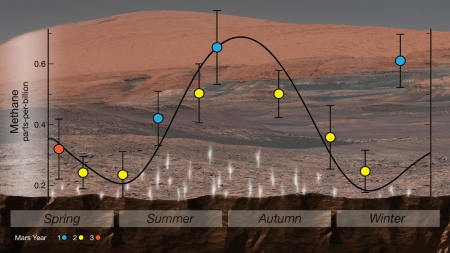Moss placed on the outside of ISS for nine months was still capable of reproducing
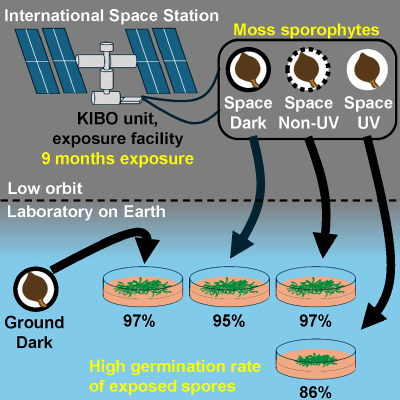
Graphic from paper.
Scientists have now demonstrated that moss, a bryophyte, can still reproduce despite spending nine months exposed to the harsh vacuum and radiation environment of space on the outside of ISS.
In fact, the researchers found that more than 80% of the spores survived and were able to germinate. You can read their peer-reviewed paper here [pdf].
That the moss could survive is in itself not as surprising as you might think. When the Apollo 12 astronauts brought back pieces from the unmanned Surveyor-3 lander scientists found a single bacterium that survived in space for more than two years. What makes this new result more significant is that moss isn’t simply bacteria, but plant life far more complex. More important, the results found that the moss was far more tolerant of that harsh environment than other lifeforms. From the paper:
In contrast, desiccation-tolerant animals such as tardigrades (Hypsibius dujardini and Ramazzottius varieornatus) and UV-resistant insects’ hydrated larvae undergoing anhydrobiosis (Polypedilum vanderplanki) failed to match the UVC tolerance observed in P. patens spores. Similarly, spores of bacteria and fungi, such as Bacillus subtilis and Aspergillus niger, showed only limited UVC resistance. Thus, these patterns highlight that certain plant structures, namely spores and seeds, tend to exhibit superior UV resistance, likely due to the presence of specialized UV-screening pigments such as flavonoids and carotenoids, which help protect DNA and cellular structures from UV-induced damage.
As the paper notes in its conclusion:
As pioneer plants, bryophytes have the potential to transform regolith into fertile soil, facilitating ecosystem development on other planets, similar to peat moss improving soil fertility on Earth.
That moss isn’t bother significantly by radiation means any greenhouse on Mars need not be shielded as aggressively as previously thought, at least in the initial stages.

Graphic from paper.
Scientists have now demonstrated that moss, a bryophyte, can still reproduce despite spending nine months exposed to the harsh vacuum and radiation environment of space on the outside of ISS.
In fact, the researchers found that more than 80% of the spores survived and were able to germinate. You can read their peer-reviewed paper here [pdf].
That the moss could survive is in itself not as surprising as you might think. When the Apollo 12 astronauts brought back pieces from the unmanned Surveyor-3 lander scientists found a single bacterium that survived in space for more than two years. What makes this new result more significant is that moss isn’t simply bacteria, but plant life far more complex. More important, the results found that the moss was far more tolerant of that harsh environment than other lifeforms. From the paper:
In contrast, desiccation-tolerant animals such as tardigrades (Hypsibius dujardini and Ramazzottius varieornatus) and UV-resistant insects’ hydrated larvae undergoing anhydrobiosis (Polypedilum vanderplanki) failed to match the UVC tolerance observed in P. patens spores. Similarly, spores of bacteria and fungi, such as Bacillus subtilis and Aspergillus niger, showed only limited UVC resistance. Thus, these patterns highlight that certain plant structures, namely spores and seeds, tend to exhibit superior UV resistance, likely due to the presence of specialized UV-screening pigments such as flavonoids and carotenoids, which help protect DNA and cellular structures from UV-induced damage.
As the paper notes in its conclusion:
As pioneer plants, bryophytes have the potential to transform regolith into fertile soil, facilitating ecosystem development on other planets, similar to peat moss improving soil fertility on Earth.
That moss isn’t bother significantly by radiation means any greenhouse on Mars need not be shielded as aggressively as previously thought, at least in the initial stages.

